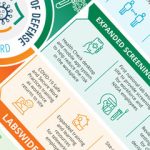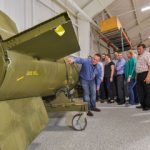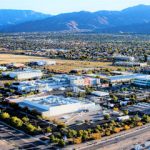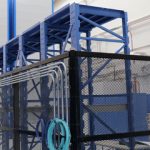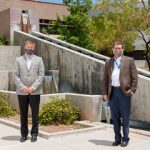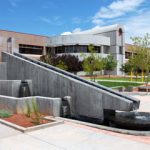COVID-19 defense: Sandia’s in-depth approach
Sandia is taking an in-depth, layered approach to combating the spread of COVID-19. As the nation navigates through the COVID-19 global health crisis and as more people come on-site, we want our workforce to know what we do to prepare and what to expect.
COVID-19 came through the door
Despite following pandemic restrictions both in and outside his home, Associate Labs Director Scott Aeilts recently was diagnosed with COVID-19, following a visit from a family friend. Describing his experience, Scott discusses the important role adhering to Sandia's COVID-19 protocols plays in protecting the workforce.
Rose Gottemoeller: The importance of science diplomacy
Rose Gottemoeller spoke to Sandians in a video conference on July 28 in honor of the 25th anniversary of the Labs’ Cooperative Monitoring Center. The talk was part of Sandia’s National Security Speakers Series.
Weapon Intern Program graduates 25th class
Sandia’s Weapon Intern Program has graduated 25 classes in 22 years. The program was created in 1998 to accelerate the learning process and transfer decades of knowledge and experience in all phases of the nuclear weapon lifecycle, from experienced weaponeers to the new generation of stockpile stewards.
Sandia Science & Technology Park spurs economic growth
A new, independent report has concluded that Albuquerque’s Sandia Science & Technology Park contributed significantly to the local economy in 2018-19 by adding 310 jobs and generating increases in economic activity and tax revenue to both the city and the state.
Expanding testing capacity for Sandia weapons modernization programs
The Sandia Programs Engineering and Assembly Research facility, or SPEAR, is the newest facility in nuclear weapons systems engineering at Sandia’s California site, expanding the Labs’ capacity to assemble and electrically test nuclear weapons components and systems.
Eric Wollerman visit
New Kansas City National Security Campus President Eric Wollerman visited Sandia in July.
Building Sandia: Home of the MESA Complex
Part three in the Building Sandia architecture series explores the Microsystems and Engineering Sciences Applications Complex, or MESA, which is set apart aesthetically and functionally from other buildings and sites at the Labs.
NNSA Administrator Gordon-Hagerty thanks Sandia during B61-12 recognition event
Lisa E. Gordon-Hagerty, DOE under secretary for nuclear security and NNSA administrator, touted the work of Sandia and the entire Nuclear Security Enterprise during a B61-12 team recognition event, part of a tour of Sandia on the eve of the 75th anniversary of the Trinity Test.
Cybersecurity researchers take spotlight at national showcase
Two Sandia computer scientists were invited to pitch their software to investors, entrepreneurs and prospective customers at a special virtual event sponsored by DOE to accelerate the commercialization of federally developed technologies.
